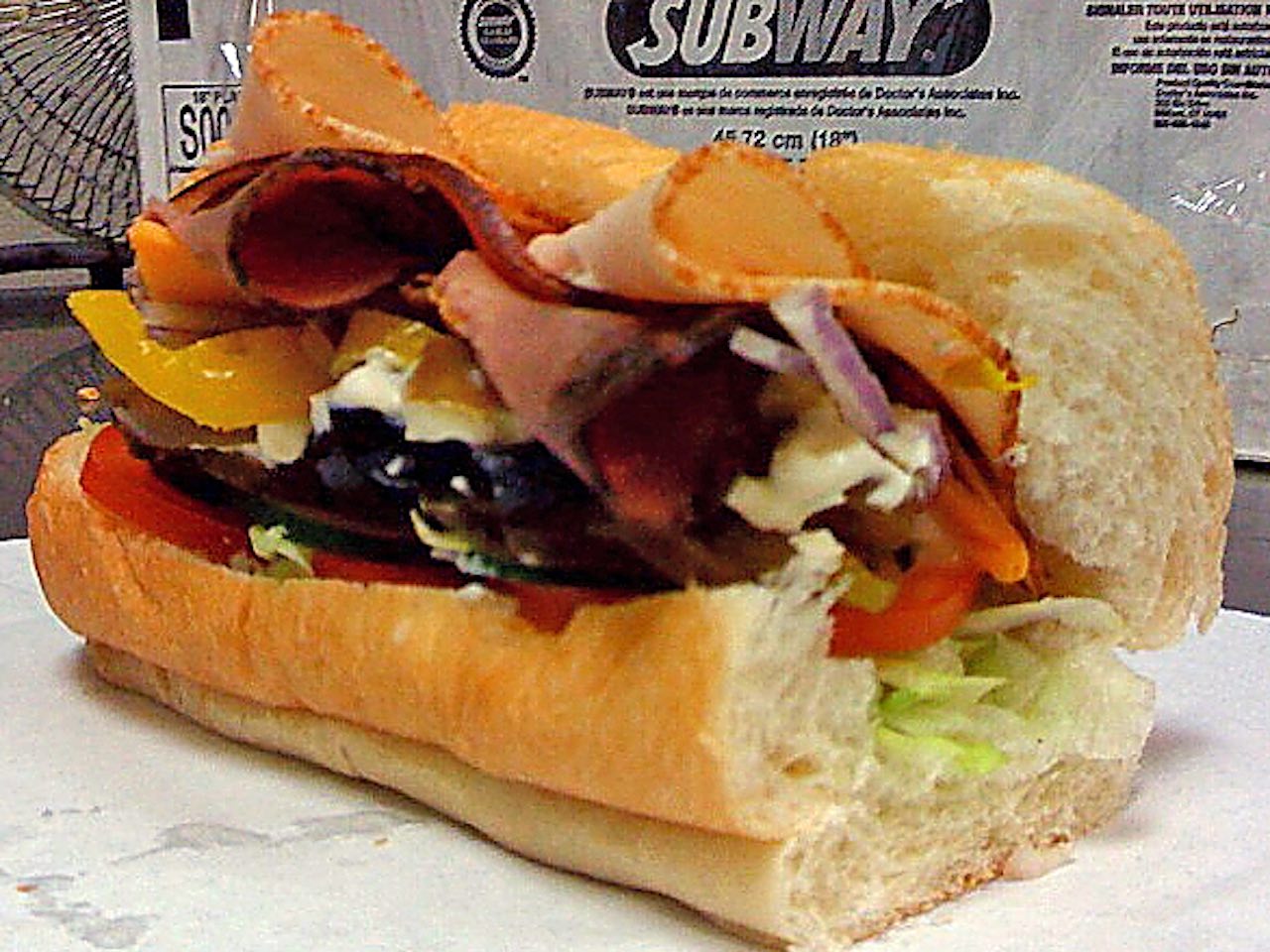
Subway’s marketing mix or 4P involves the strategies and tactics for the products, prices, places, and promotion (the 4Ps) presented to target consumers. This marketing mix and related marketing strategies and tactics are based on industry and market conditions, which involve the strategies of Subway’s competitors, such as McDonald’s, Wendy’s, Burger King, and other fast-food restaurant chains, as well as coffeehouses, like Starbucks. Market saturation and the fierce competition shown in the Five Forces analysis of Subway indicate the importance of a marketing mix that suits competitive rivalry and other factors in the foodservice market. The submarine sandwich company’s marketing strategy and 4P adapt to this competitive environment.
The global foodservice market offers opportunities for business growth that Subway’s marketing mix supports. The company uses its 4Ps to reinforce its brand, attract and retain more customers, and generate more sales at franchise locations. Through an effective marketing strategy aligned with this marketing mix, business development moves toward the realization of Subway’s mission and vision.
Product
The company’s product mix determines food and beverage products available for inclusion in the 4Ps. Subway’s marketing mix includes menu items represented through the following product categories:
- Submarine sandwiches
- Wraps and other sandwiches
- Salads
- Sides
- Desserts
- Drinks
Subway’s products are in the foodservice industry. This focus makes the marketing mix include food and beverage products that the company offers to target consumers around the world. These products are developed based on market factors, such as social trends affecting consumer preferences, as well as the other trends discussed in the PESTLE/PESTEL analysis of Subway. The company has adapted its 4P and marketing strategy to include sandwiches, desserts, sides, and drinks that match current consumer preferences and market demand. Subway’s marketing mix continues evolving as the business develops and introduces new products. The products in this marketing mix are subject to the cost requirements and product development goals of Subway’s competitive strategy and growth strategies.
Price
Prices are set based on the company’s revenue targets, branding, target consumers, and other market variables relevant to this marketing mix. Subway’s 4Ps use the following pricing strategies:
- Market-oriented pricing
- Bundle pricing
Market-oriented pricing ensures that Subway’s products are priced competitively. Also, the company’s marketing mix involves a bundle pricing strategy for bundles of food and drinks. Subway’s marketing strategy applies these pricing strategies to gain market share by considering consumers’ price sensitivity in 4P decisions. The foodservice company adjusts its prices according to market conditions and competitors’ strategies. The SWOT analysis of Subway shows high brand equity and other competitive advantages that support competitive pricing for this marketing mix.
Place
Customers’ access to foodservice depends on the places, venues, or locations, as well as the channels included in the 4Ps. Subway’s marketing mix involves the following places:
- Restaurants
- Kiosks
- Non-traditional locations
- Support facilities
Subway restaurants, kiosks, and other locations are the prominent places in this marketing mix. These places are where customers buy or consume the company’s products. The company’s distribution strategy also involves various facilities that support the operations of these franchise locations. The location strategy in Subway’s operations management aligns with the places in this 4P. Operations managers aim for high efficiency and productivity in the supply chain to support the marketing strategy for these franchise locations in local and regional markets. Furthermore, the regional divisions in Subway’s corporate structure (organizational structure) allow for effective strategic management for the locations in this marketing mix.
Promotion
This marketing mix includes promotion through marketing communications for consumer awareness and interest in the company’s brand, food service, and food and beverage products. Subway’s 4P uses the following promotional activities:
- Advertising
- Sales promotion
- Public relations
Subway advertises using various media and channels to reach its target customers. This marketing mix uses sales promotion to persuade consumers to purchase the company’s products. For example, freebies are given as rewards that encourage people to buy more submarine sandwiches at Subway restaurants. On the other hand, through public relations, the company’s marketing strategy improves consumer perception about the restaurant chain. Many of the programs and initiatives in Subway’s ESG and CSR strategy also function for public relations to support the company’s marketing mix. The tactics used to promote the company’s foodservice business improve the effectiveness of the products, prices, and places in the 4Ps.
Subway’s Marketing Mix & Business Strategy
Subway’s marketing mix supports successful business strategy implementation. For example, this 4P facilitates the company’s market penetration strategy involving its franchising business model. Also, the pricing strategies used in this marketing mix, combined with the competitive strategy of cost leadership, ensure profitability in the operations of Subway and its franchisees. Furthermore, growth strategies for opportunities in the international market are supported through Subway’s marketing strategy and marketing mix.
References
- Garg, R., Chhikara, R., Agrawal, G., Rathi, R., & Arya, Y. (2024). Sustainable marketing mix and supply chain integration: A systematic review and research agenda. Sustainable Futures, 100269.
- Kumolu-Johnson, B. (2024). Improving service quality in the fast-food service industry. Journal of Service Science and Management, 17(1), 55-74.
- Pimentel, P. C., Bassi-Suter, M., & Didonet, S. R. (2024). Brand activism as a marketing strategy: An integrative framework and research agenda. Journal of Brand Management, 31(2), 212-234.
- Subway – Frequently Asked Questions.
- Subway Rewards.
- Subway’s Menu.
- Susanto, A., & Fauziah, H. (2023). The influence of product placement and product attributes toward purchase intention of Subway sandwich. International Journal of Science and Business, 19(1), 128-146.
- U.S. Department of Agriculture – Economic Research Service – Food Service Industry Market Segments.